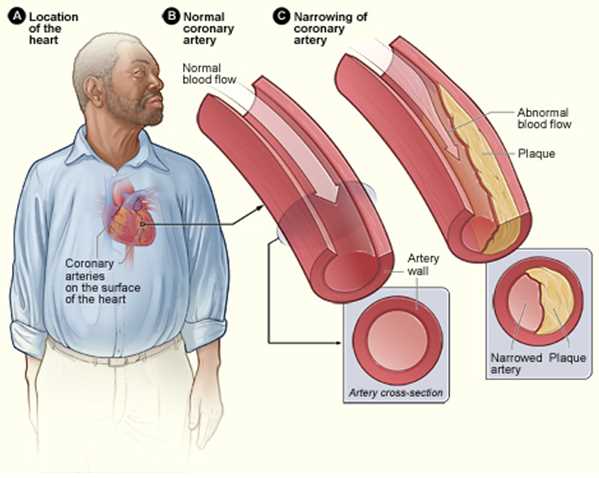[1]
Hill LK, Sollers Iii JJ, Thayer JF. Resistance reconstructed estimation of total peripheral resistance from computationally derived cardiac output - biomed 2013. Biomedical sciences instrumentation. 2013:49():216-23
[PubMed PMID: 23686203]
[2]
Fromy B, Merzeau S, Abraham P, Saumet JL. Mechanisms of the cutaneous vasodilator response to local external pressure application in rats: involvement of CGRP, neurokinins, prostaglandins and NO. British journal of pharmacology. 2000 Nov:131(6):1161-71
[PubMed PMID: 11082124]
[3]
Lilly SM, Jacobs D, Bluemke DA, Duprez D, Zamani P, Chirinos J. Resistive and pulsatile arterial hemodynamics and cardiovascular events: the Multiethnic Study of Atherosclerosis. Journal of the American Heart Association. 2014 Dec 11:3(6):e001223. doi: 10.1161/JAHA.114.001223. Epub 2014 Dec 11
[PubMed PMID: 25497879]
[4]
Goodwill AG, Dick GM, Kiel AM, Tune JD. Regulation of Coronary Blood Flow. Comprehensive Physiology. 2017 Mar 16:7(2):321-382. doi: 10.1002/cphy.c160016. Epub 2017 Mar 16
[PubMed PMID: 28333376]
[5]
Forrester SJ, Booz GW, Sigmund CD, Coffman TM, Kawai T, Rizzo V, Scalia R, Eguchi S. Angiotensin II Signal Transduction: An Update on Mechanisms of Physiology and Pathophysiology. Physiological reviews. 2018 Jul 1:98(3):1627-1738. doi: 10.1152/physrev.00038.2017. Epub
[PubMed PMID: 29873596]
[6]
Song SH,Kim JH,Lee JH,Yun YM,Choi DH,Kim HY, Elevated blood viscosity is associated with cerebral small vessel disease in patients with acute ischemic stroke. BMC neurology. 2017 Jan 31;
[PubMed PMID: 28143595]
[7]
Gorrasi J, Pazos A, Florio L, Américo C, Lluberas N, Parma G, Lluberas R. Cardiac output measured by transthoracic echocardiography and Swan-Ganz catheter. A comparative study in mechanically ventilated patients with high positive end-expiratory pressure. Revista Brasileira de terapia intensiva. 2019 Oct-Dec:31(4):474-482. doi: 10.5935/0103-507X.20190073. Epub
[PubMed PMID: 31967221]
Level 2 (mid-level) evidence
[8]
Yuan T, Yang T, Chen H, Fu D, Hu Y, Wang J, Yuan Q, Yu H, Xu W, Xie X. New insights into oxidative stress and inflammation during diabetes mellitus-accelerated atherosclerosis. Redox biology. 2019 Jan:20():247-260. doi: 10.1016/j.redox.2018.09.025. Epub 2018 Oct 19
[PubMed PMID: 30384259]
[9]
Tuder RM, Archer SL, Dorfmüller P, Erzurum SC, Guignabert C, Michelakis E, Rabinovitch M, Schermuly R, Stenmark KR, Morrell NW. Relevant issues in the pathology and pathobiology of pulmonary hypertension. Journal of the American College of Cardiology. 2013 Dec 24:62(25 Suppl):D4-12. doi: 10.1016/j.jacc.2013.10.025. Epub
[PubMed PMID: 24355640]
[10]
Kianoush S, Yakoob MY, Al-Rifai M, DeFilippis AP, Bittencourt MS, Duncan BB, Bensenor IM, Bhatnagar A, Lotufo PA, Blaha MJ. Associations of Cigarette Smoking With Subclinical Inflammation and Atherosclerosis: ELSA-Brasil (The Brazilian Longitudinal Study of Adult Health). Journal of the American Heart Association. 2017 Jun 24:6(6):. doi: 10.1161/JAHA.116.005088. Epub 2017 Jun 24
[PubMed PMID: 28647689]
[11]
Dakhlallah DA, Wisler J, Gencheva M, Brown CM, Leatherman ER, Singh K, Brundage K, Karsies T, Dakhlallah A, Witwer KW, Sen CK, Eubank TD, Marsh CB. Circulating extracellular vesicle content reveals de novo DNA methyltransferase expression as a molecular method to predict septic shock. Journal of extracellular vesicles. 2019:8(1):1669881. doi: 10.1080/20013078.2019.1669881. Epub 2019 Sep 28
[PubMed PMID: 31632618]
[12]
Bangash MN, Kong ML, Pearse RM. Use of inotropes and vasopressor agents in critically ill patients. British journal of pharmacology. 2012 Apr:165(7):2015-33. doi: 10.1111/j.1476-5381.2011.01588.x. Epub
[PubMed PMID: 21740415]
[13]
Godzieba A, Smektała T, Jędrzejewski M, Sporniak-Tutak K. Clinical assessment of the safe use local anaesthesia with vasoconstrictor agents in cardiovascular compromised patients: a systematic review. Medical science monitor : international medical journal of experimental and clinical research. 2014 Mar 10:20():393-8. doi: 10.12659/MSM.889984. Epub 2014 Mar 10
[PubMed PMID: 24608362]
Level 1 (high-level) evidence
[14]
Zamponi GW, Striessnig J, Koschak A, Dolphin AC. The Physiology, Pathology, and Pharmacology of Voltage-Gated Calcium Channels and Their Future Therapeutic Potential. Pharmacological reviews. 2015 Oct:67(4):821-70. doi: 10.1124/pr.114.009654. Epub
[PubMed PMID: 26362469]
[15]
Steers WD. Pharmacologic treatment of erectile dysfunction. Reviews in urology. 2002:4 Suppl 3(Suppl 3):S17-25
[PubMed PMID: 16986010]



